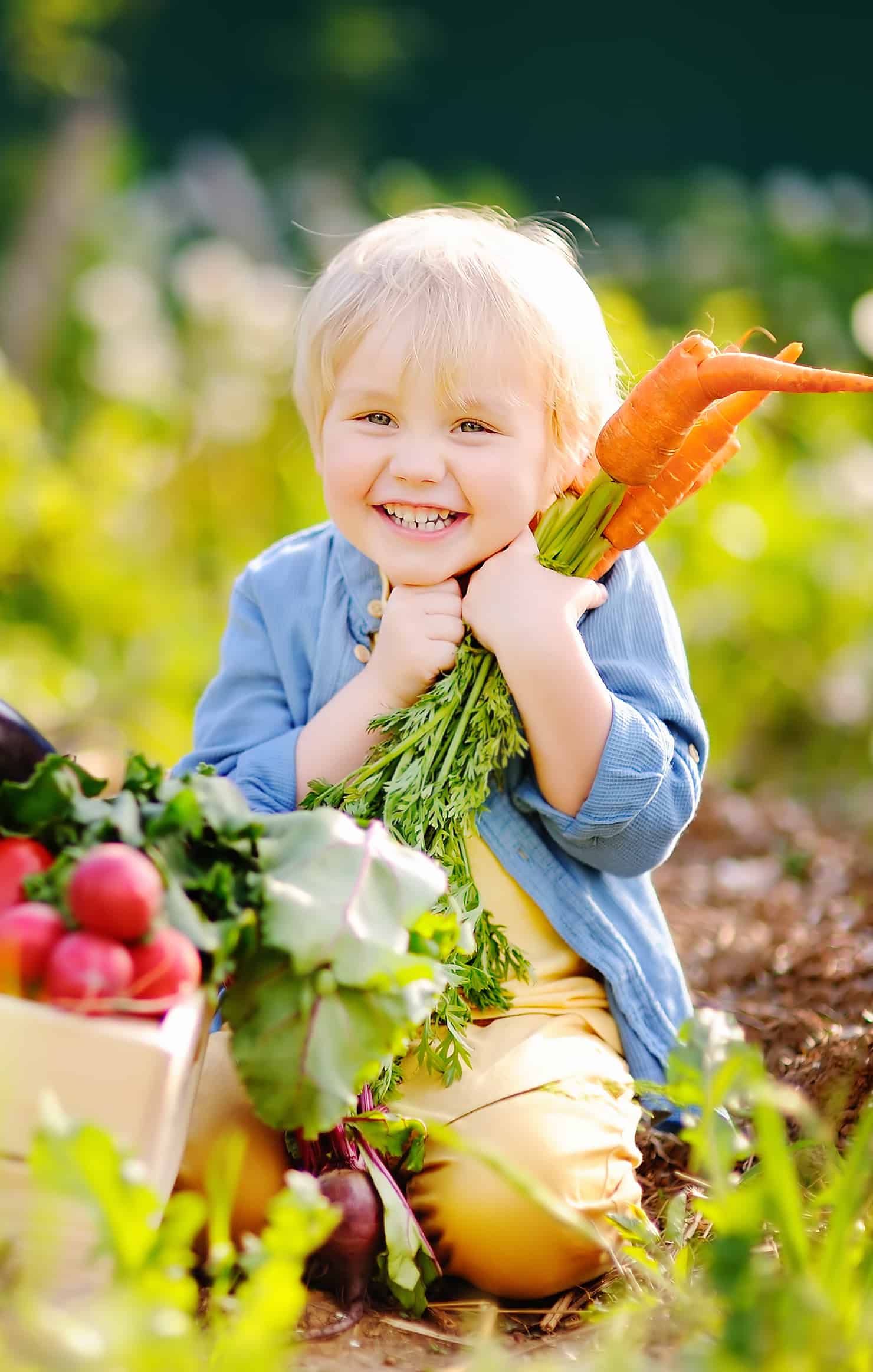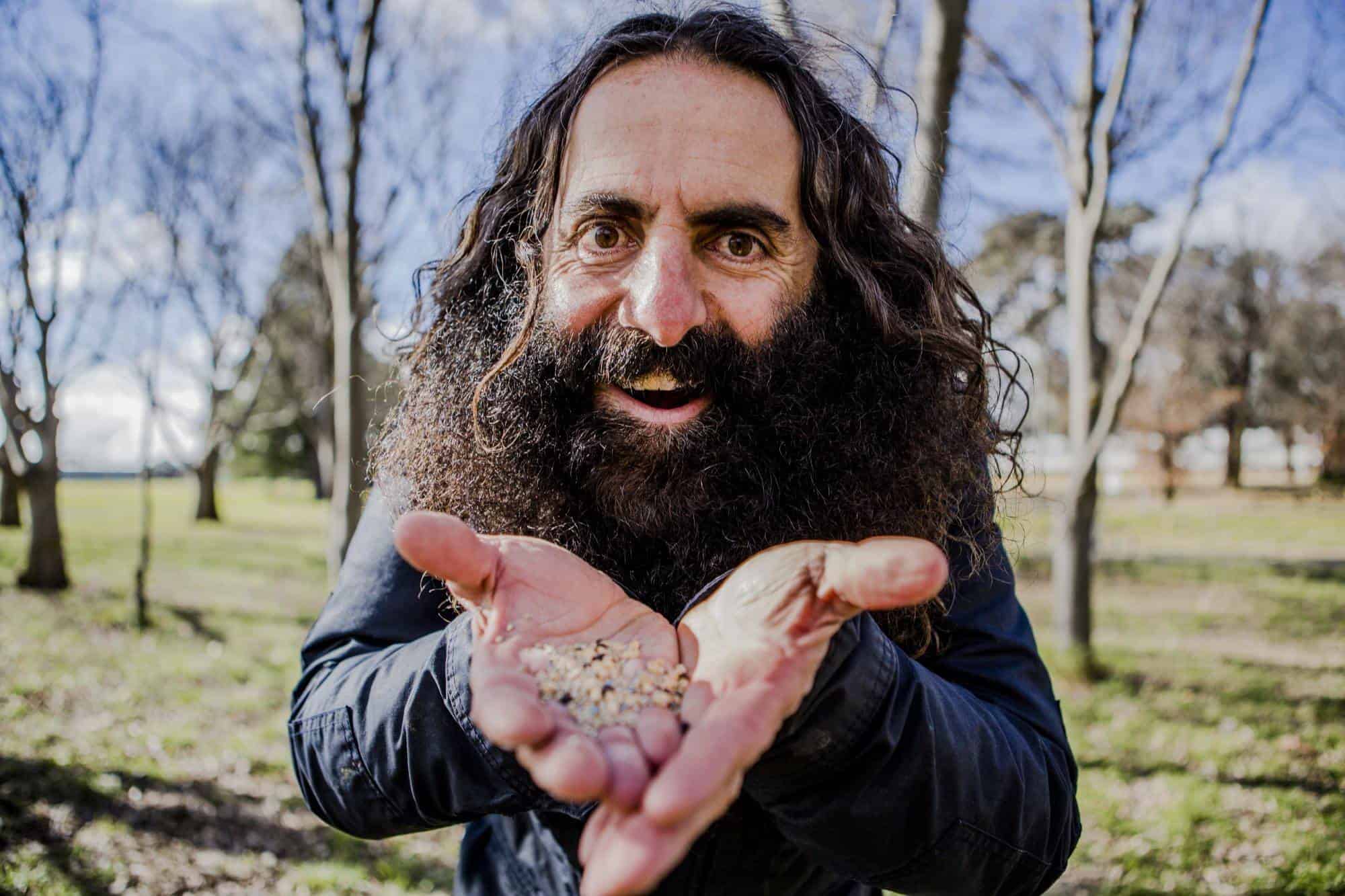Do your kids spend a lot of time looking at screens? Perhaps they need more green time and less screen time, and getting them excited about taking care of their own garden is a great start.
Ok, we hear you – you don’t think you will be able to get the kids excited about getting their hands dirty… Costa Georgiadis and Junior Landcare strive to encourage kids to get outside and explore their backyard, so we reached out to Costa and he had some great tips to share.
Gardening is a great way to engage kids in nature play and help them to understand the natural world that surrounds them. Gardening activities can easily be tailored to different age groups and skill levels, so everyone can get involved in one way or another. The activities can also extend to the kitchen when working with edible plants – there is simply nothing better than cooking something you have lovingly grown, and it tastes so much better too!
Planting and tending to a garden also teaches children about responsibility and gives them a sense of accomplishment as they watch their garden grow. Keeping a plant or several plants alive takes dedication, routine and a little bit of elbow grease. The best way to get the kids in the garden is for you to be in the garden too – make it a family affair.
The University of Adelaide did a study and found that children who have more green time over screen time have lower levels of mental illness, superior cognitive functioning and higher academic achievement. Plus – it’s great exercise and a healthy way to get some vitamin D from the sun. What’s not to love?
With the cost of food rising, making edible gardens is a great idea, but it’s not the only reason to get the family honing their green thumbs. Our backyards are a place of barbecues, picnics, playing, looking for bugs and exploring. For those who don’t have access to an outdoor area, growing some herbs or flowers in a pot, creating a fairy or monster garden, or having a few indoor plants to look after and keep alive is a great way to get in touch with nature.
If that’s not enough convincing then how about these 10 tricks?
1.Remind them of the delicious fruits and vegetables that can be grown in their garden.
2.Explain to your kids the importance of gardening for the environment, such as reducing the amount of pesticides and fertilisers used in food supply, and how plants remove carbon dioxide from the atmosphere.
3.Show them how gardening can be fun and creative. Let them choose the plants they want to grow and help them design their own garden, maybe even give them theme ideas like a fairy garden or decorate it with gnomes.
4.Have a contest of who can grow the largest vegetable.
5.Turn it into a family activity and involve everyone in the planning, planting and harvesting of the garden.
6.Invite friends over to help with the garden and make it a social activity, swap cuttings, plants, and food you grow.
7.Offer rewards for completing certain tasks, such as a special treat or a new garden tool.
8.Make a bird feeder or bird bath out of recycled materials.
9.Make a bug hotel to encourage helpful bugs to spend time in your garden.
10.Start a worm farm to put your compost in and be rewarded with nutrient rich juice to feed your plants.

Plants to Grow in North Queensland
North Queensland is the perfect place to grow many different types of plants due to its warm climate. From summer blooms to winter vegetables, there are plenty of options for gardeners in the region. Everything has a certain time of year that it is best to plant, so research each one carefully to know when to plant and harvest.
Here are some options to consider for your garden. This is by no means an exhaustive list.
- Flowers – Flowering plants such as Frangipanis, Gardenia, Corkwood, Lilly Pilly and Native Jasmine (all attract native birds and butterflies).
- Fruits – Tropical fruits such as bananas, paw paws, passionfruit, strawberries, and finger limes.
- Herbs – Native mint, lemon myrtle, native thyme, basil, dill, coriander, parsley, chives, rocket, oregano and shallots.
- Vegetables – Sweet potatoes, eggplants, capsicums, beans, chillies, tomatoes, lettuce, silverbeet, cucumbers and lettuce.
Gardening Activities Include:
- Planting – this is the process of introducing new plants into the garden, either through sowing seeds or planting seedlings.
- Weeding – this involves removing unwanted weeds from the garden beds.
- Pruning – pruning involves cutting away dead or overgrown branches and stems to promote healthy growth and flowering.
- Watering – this involves providing water to the plants in the garden.
- Fertilising – this involves adding nutrients to the soil to promote healthy growth.
- Composting – this involves recycling kitchen, garden and yard waste into a nutrient-rich soil.
- Pest control – the use of natural or chemical methods to control pests and diseases.
- Harvesting – involves collecting produce from the garden when it’s read to eat.
- Landscaping – this involves creating attractive and functional outdoor spaces by designing and planting beds, borders and other features.
Costa is a landscape architect, environmental educator and television presenter who has an all-consuming passion for plants and people. He knows how to bring out the best in each and takes great pleasure in bringing them together. Costa believes in embracing and celebrating mother nature’s cycles and seasons and nurturing her balance, beauty and bounty organically. His holistic approach is all about gardening the soil and the soul. Join Costa and Junior Landcarers in action on the Junior Landcare YouTube channel.

For more insight into this topic, check out the PakMag Parents Podcast episode 142, where Bree interviews Costa on all things gardening at www.pakmag.com.au/podcast





